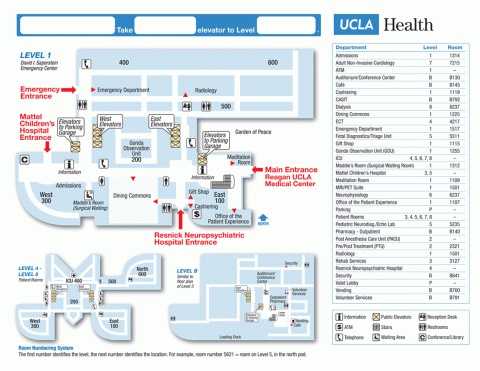Helping Your Child Manage Pain After Surgery

Most children experience at least some pain after surgery. We work closely with you to manage your child's pain. You know your child best. Please always share information with your child’s nurse about what comforts and calms your child best.
Types of Pain Medications
Your child’s doctor will prescribe the pain medicine that will help your child the most, based on the type of surgery, how old your child is and if he/she has had any previous experiences with pain medicine.
We may give your child pain medication in pill or capsule form, as a liquid, or through an IV. Some children older than 7 who are admitted to the hospital after surgery may get medication through a special IV pump. This pump allows them to push a button to get medication when they are in pain. The pump is specifically programed to give your child safe doses. It will not administer too much medication even if your child pushes the button every minute.
If your child has a caudal or epidural catheter, we can provide additional pain relief that way. Providing local anesthesia (numbing medicine) through these catheters helps decrease the use of narcotic medications and their potential side effects. Talk to your child’s anesthesiologist to learn if this is an option for the type of surgery your child needs.
There are three main types of medicine doctors prescribe for children after surgery:
- Sedatives: Sedatives are not pain medications. They help decrease children’s anxiety. They also help children sleep, and can prevent them from remembering frightening or painful events. We often give sedatives to children in the ICU.
- Narcotic analgesics: These medications, also called opioids, often include morphine, fentanyl and oxycodone. They are strong medications given for a high level of pain, and the doctor will carefully monitor the dosage to keep your child safe. Opioids carry the risk of physical dependence if used for more than a few days. As a child recovers from surgery and needs less pain medication, the doctors will slowly lower the medicine dose before stopping it all together. This reduces symptoms that can be associated with sudden withdrawal, such as tremors and sweating. It is important to note that temporary use of opioid pain medications will have no long-term effects on your child.
- Non-opioid analgesics: These medicines often include Tylenol (acetaminophen), Motrin or Advil (ibuprofen) and Toradol (ketorolac).
Nonmedical Ways We Help Children Manage Pain
There are many nonmedical measures you and the surgical team can take to help your child manage pain. Often, the first step is simply recognizing your child is in pain.
Young children cannot always verbalize what they are feeling, and older ones may not want to. We know this makes it challenging to determine the level of pain each child is experiencing. We will work with you to manage your child’s pain, since you know your child best.
Helping Babies Manage Pain
We are especially observant with babies, because they are unable to communicate in words how they are feeling. They communicate pain in other ways, including:
- High-pitched crying, grimacing, chin quivering
- Difficulty eating or taking a pacifier
- Irregular breathing
- Avoiding eye contact
- For newborns, lots of sneezing, yawning or hiccupping
- Unusual stillness or quietness
Here are some pain-relieving measures we often suggest to parents or guardians for infants:
- Create an environment of comfort by swaddling, minimizing lights and noises, restricting visitors, making eye contact and speaking softly.
- Hold and cuddle them, or touch their hand or foot. Ask the nurse if you can have skin-to-skin time with your baby.
- Distract your baby with gentle singing, a mobile with soft music, feeding him/her or offering a pacifier.
Helping Young Children Manage Pain
Toddlers, preschoolers and young school-aged children are better able to communicate with words, but they may not be able to tell you exactly what is wrong or where the pain is. Some signs to look for include:
- Not eating, drinking or playing as much
- Crying, moaning and irritability
- Restlessness or being very still
- Difficulty sleeping
- Holding (and often not letting you touch) the area that hurts
Here are some pain-relieving measures we often suggest to parents or guardians for young children:
- Create a calming environment by dimming lights, providing quiet time, bringing comforts from home (such as a favorite blanket or stuffed animal) and staying with your child as much as you can. Your presence alone is very comforting.
- Offer their favorite physical comforts, whether it is a back rub, hair stroke, handholding, rocking or lying down in bed with him/her.
- Distract in age-appropriate ways, such as blowing bubbles for toddlers or offering a phone or tablet to your first-grader. Reading books, playing music, or watching television and movies are all good distractions.
Helping Older Children Manage Pain

Older children and teenagers are better at communicating when something hurts. For various reasons, they may not want to tell you or they may think there is no way to make it better. Some signs you might notice include:
- Being less active than usual, withdrawing from friends and family, becoming quieter
- Not eating, drinking or sleeping as much
- Irritability, restlessness or even becoming angry more often
- Complaining of pain
Some pain-relieving measures we often suggest to parents or guardians that may help older children and teenagers:
- Create a safe space for them. Offer to stay with them, but respect their privacy if they say no. Let them know you are there to help, and remind them it is normal to be scared.
- Offer hugs or gentle touch, such as massage. Ask the care team if your child can use a heating pad or similar item.
- Watch television or movies with them, or offer other favorite distractions (books, puzzles, music). Practicing deep breathing can be helpful. Another idea is to talk about a favorite memory or experience.
What to Read Next
Find out more about UCLA Mattel Children’s Hospital surgery locations, including directions and parking information, as well as complete contact information.